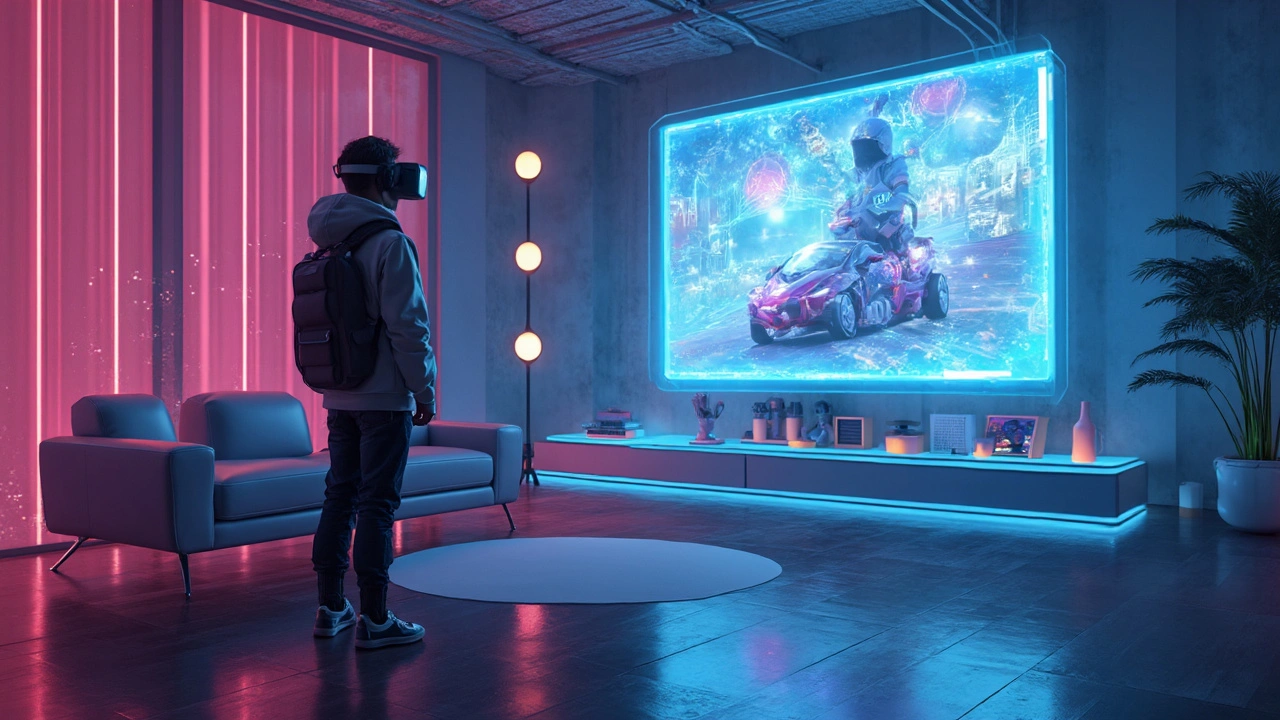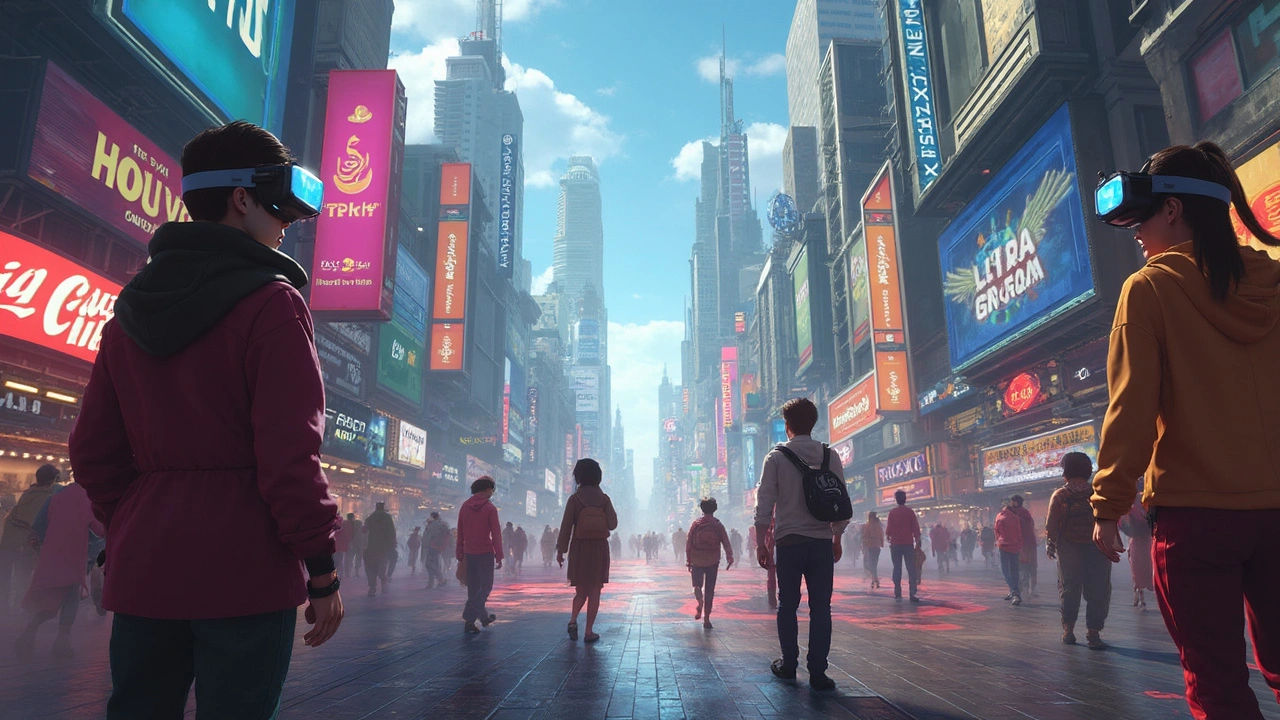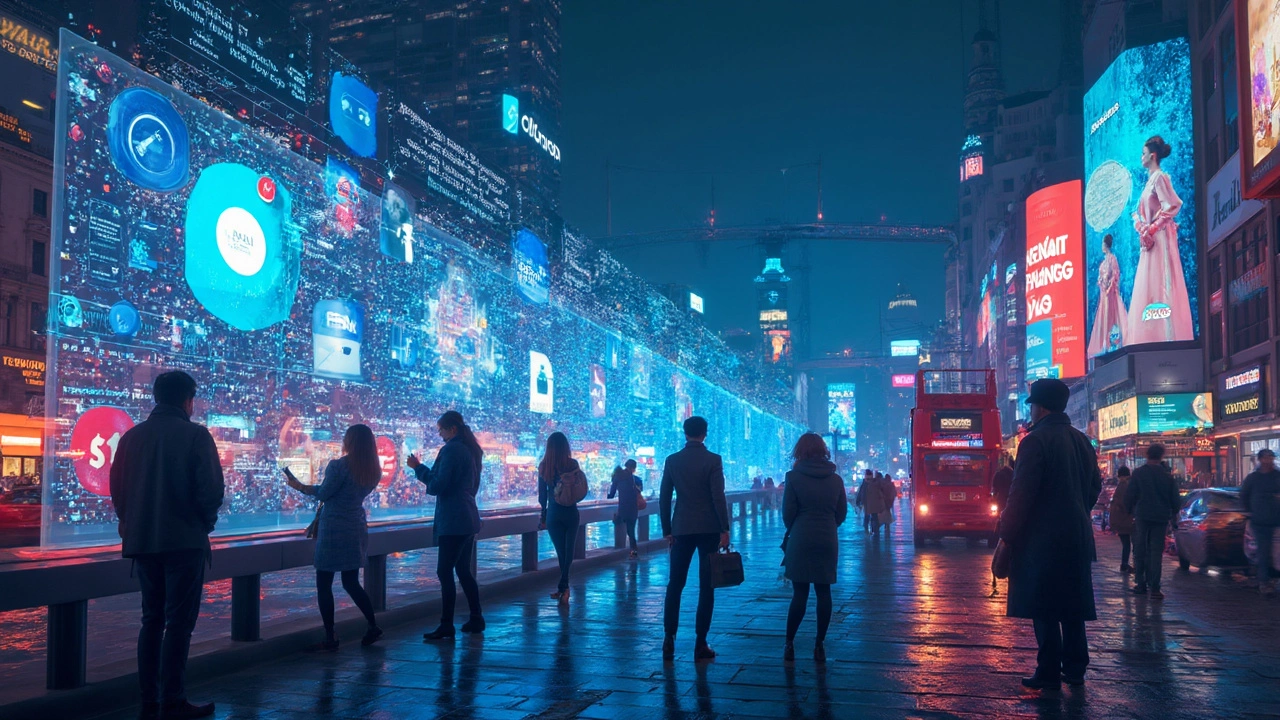In-Game Ads: What You Need to Know

Alright, let's talk about in-game ads. You ever notice how ads have squeezed their way into pretty much every corner of our lives? Well, gaming is no exception. From subtle product placements to full-blown ad campaigns, advertisers have found creative ways to reach out to us while we're immersed in our favorite games. It's like they know exactly when we're about to take a victory lap, ready to slide an ad right under our noses.
But hold on a second—is that really a bad thing? I mean, sure, ads can be annoying if done wrong. But imagine if they were more engaging or offered something cool like in-game perks or exclusive content. Now that's something. Plus, for game developers, this could mean a little extra cash to improve the game. Sounds like a fair trade, right?
- The Rise of In-Game Advertising
- How In-Game Ads Work
- Impact on Gaming Experience
- Benefits for Marketers and Gamers
- Future Trends in In-Game Advertising
The Rise of In-Game Advertising
In the early days of gaming, ads were basically non-existent. Games like Pac-Man and Super Mario didn't have you munching on virtual burgers from McDonald's. But with the gaming industry now booming, companies saw a golden opportunity. By the late 2000s, the landscape started changing, and in-game ads were popping up like those pesky mushrooms in Mario.
This shift was partly driven by the massive growth in mobile gaming. With smartphones becoming a staple in everyone's pockets, games became more accessible, attracting millions of players around the globe. Developers figured out they could offer games for free or at a lower price by incorporating ads, making gaming more inclusive and lucrative at the same time.
In 2020, the global gaming market was worth over $159 billion—an appetizing pie for advertisers. Digital marketing gurus realized that gamers were a captive audience, often spending hours immersed in game worlds. Why not put products in those virtual realities? This idea paved the way for dynamic ads that updated in real-time, ensuring gamers saw the latest products or campaigns.
As advertisers got smarter, they started using creative tactics. Ever played a racing game where billboards changed with real-world ad campaigns? That's dynamic advertising in action. It's even gone a step further with interactive in-game ads where players can engage with the ad itself. It's all part of making ads less annoying and more of a natural fit in the gaming experience.
Here's a fun fact: Some games even hosted live events featuring brands. Think of it like a concert where your favorite artist is singing about their love for a certain soda, right within the game. It adds a quirky twist and brings life to what could otherwise be just another ad break.
How In-Game Ads Work
Alright, let's break down how in-game ads actually work. Games these days are like the perfect hunting ground for advertisers. Why? Because players are super engaged. The key is integrating ads in a way that they enhance instead of disrupt the experience. You don’t want someone quitting your game because they’re annoyed by constant pop-ups.
The science of it starts with understanding the game's environment. Advertisers often target games that align with their brand image. For instance, a racing game might feature banners for car brands or motor oils, blending seamlessly with the scene. This kind of subtle integration makes the ads feel less like a sales pitch and more like part of the game.
And then, there’s the tech behind it. Most of these game ads use technology that lets them target very specific audiences. With data on gamers’ habits and preferences, ads can be adjusted dynamically. Say a gamer in Europe sees a different ad than one in North America, depending on regional preferences and time of day.
There are also different types of ads you might come across:
- Static Ads: These are placed within the game environment and don’t change. Think of a billboard in a racing game.
- Dynamic Ads: These can be updated in real-time over the internet, allowing for fresh ad content without needing to update the game itself.
- Rewarded Ads: Watch a quick clip to earn in-game rewards. These are popular because they give a little something back to the player.
Video games are expected to generate about $200 billion in global revenue by the end of 2025. A chunk of this comes from ads. This makes it important to understand how seamlessly embedded ads can keep both gamers and marketers happy. When done right, in-game ads can be a win-win, offering gamers free content or bonuses and giving advertisers a prime platform to reach out to potential customers.

Impact on Gaming Experience
So, what's the deal with how in-game ads mess or maybe even spice up the gaming experience? Well, imagine you're deeply into a game, perfectly timing your jump, and suddenly an ad pops up. Yeah, it's the kind of interruption that can make you want to pull your hair out. But not all in-game ads are like that.
The good ones blend into the game's world effortlessly. Think of an ad on a billboard in a racing game. It's part of the scenery and adds realism without pulling you out of the moment. In fact, gaming advertisements done right can actually add a level of immersion.
Of course, there's a flip side. If a game bombards you with too many ads or makes you watch a 30-second video just to move to the next level, it can seriously mess with the flow. This can lead to frustrated gamers quitting the game altogether, which is exactly what developers don't want.
Surprisingly, a survey from 2024 showed that 68% of gamers are okay with ads if they get in-game bonuses like extra lives or exclusive skins. So, there's definitely a way to keep everyone happy. Digital marketing is constantly evolving, and smart advertisers use this data to find that sweet spot where ads can coexist with gameplay without being annoying.
The impact also varies with the type of game. Fast-paced games might suffer from sudden interruptions, while slower, story-driven ones might integrate ads more naturally. Either way, keeping a balance is key to maintaining an enjoyable gaming experience.
Benefits for Marketers and Gamers
So, here's where things get interesting. In-game ads aren't just about throwing products at players. There's actually a lot more going on under the hood, and both advertisers and gamers have a lot to gain.
For starters, marketers get to tap into a massive, engaged audience. Gamers are known for being deeply involved in their experiences. It's not like traditional TV ads where viewers might skip or ignore them. In games, especially when ads are well-integrated, players are more likely to notice and remember brands. Imagine you're cruising through a game, and you see a car branded with a familiar logo—it sticks with you, right?
On top of that, in-game ads allow marketers to be super targeted. They can create ads that feel like a natural part of the game. This means they can tailor messages to specific gameplay settings or even player progress. No more one-size-fits-all; now it's all about personalizing the experience.
Now, from a gamer's perspective, ads can provide benefits too. Think about all those free-to-play games out there. Ads often foot the bill, allowing gamers to play without spending a dime. Some games even offer in-game rewards in exchange for watching ads. It's a trade-off that many players find worth it—getting perks like extra lives, special items, or sometimes even exclusive content.
Here's a little snippet of how it shakes out:
| Aspect | Marketers | Gamers |
|---|---|---|
| Audience Engagement | Highly targeted and involved | Potential for free or enhanced content |
| Cost | Cost-effective with a high reach | Free access to games |
| Experience | Personalized ads enhance brand recall | In-game rewards for ad engagement |
In the end, it's all about balance. When done right, in-game ads can enhance the overall experience rather than distract from it. Both advertisers and gamers stand to gain when ads are more than just interruptions—they become part of the adventure.

Future Trends in In-Game Advertising
So, where are we heading with in-game ads? Well, it's like watching a blockbuster sequel unfold. As gaming tech becomes more advanced, the ads will get smarter and blend even more seamlessly into gameplay. Think about it: with VR and AR on the rise, advertisers can create immersive experiences like never before. Imagine playing a game, and bam, an ad pops up that's so natural, you might not even realize it's an ad at first.
Another big trend is personalization. Just like those cat food ads that somehow know you just adopted a kitten (thanks, Baxter), in-game ads will become more tailored to each player's habits and preferences. This is possible through data analytics that track player behavior. It's all about delivering ads that resonate and, hopefully, don't disrupt gameplay too much.
Let's not forget about non-intrusive advertising. Players want their gaming experience uninterrupted, so expect more brands to choose subtle product placements or sponsorships over flashy pop-ups. Games like sports simulators or open-world masterpieces provide natural spaces for these kinds of ads.
For the technically curious, blockchain could shake things up too. Blockchain offers transparency and lets players possibly earn rewards with their interactions with these ads. Imagine a world where you get a little something every time you engage with an ad in-game.
Here's a glimpse at how players and advertisers might interact in the near future:
| Trend | Description |
|---|---|
| Immersive Tech | Use of VR and AR to create ad experiences. |
| Personalized Ads | Ads tailored to individual player data. |
| Non-Intrusive Formats | Subtle product placements and sponsorships. |
| Blockchain Integration | Transparent interactions with potential rewards. |
It's a brave new world for advertising strategies in gaming. Both players and marketers are on the verge of benefiting from more engaging and less annoying ad experiences. The key will be striking that delicate balance, ensuring the ads add to the game rather than distract from it. Fingers crossed the future of gaming ads gets us all a bit more excited!



